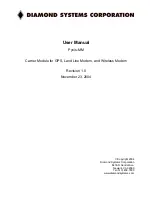
LARA-R2 series - System Integration Manual
UBX-16010573 - R12
Design-in
Page 120 of 157
Keep ground separation from microphone lines to other noisy signals. Use an intermediate ground layer or
vias wall for coplanar signals.
For an external audio device providing differential microphone input, route the microphone signal lines as a
differential pair embedded in ground to reduce differential noise pick-up. The balanced configuration will help
reject the common mode noise.
Cross other signals lines on adjacent layers with 90° crossing.
Place bypass capacitor for RF very close to the active microphone. The preferred microphone should be
designed for GSM applications which typically have an internal built-in bypass capacitor for RF very close to
active device. If the integrated FET detects the RF burst, the resulting DC level will be in the pass-band of the
audio circuitry and cannot be filtered by any other device.
General guidelines for the downlink path (speaker / receiver) are the following:
The physical width of the audio output lines on the application board must be wide enough to minimize series
resistance since the lines are connected to low impedance speaker transducers.
Avoid coupling of any noisy signal to speaker lines: it is recommended to route speaker lines away from the
module
VCC
supply line, any switching regulator line, RF antenna lines, digital lines and any other possible
noise source.
Avoid coupling between speaker / receiver and microphone lines.
Optimize the mechanical design of the application device, the position, orientation and mechanical fixing (for
example, using rubber gaskets) of speaker and microphone parts in order to avoid echo interference between
the downlink path and uplink path.
For an external audio device providing differential speaker / receiver output, route the speaker signal lines as
a differential pair embedded in ground up to reduce differential noise pick-up. The balanced configuration
will help reject the common mode noise.
Cross other signals lines on adjacent layers with 90° crossing.
Place the bypass capacitor for RF close to the speaker.
















































